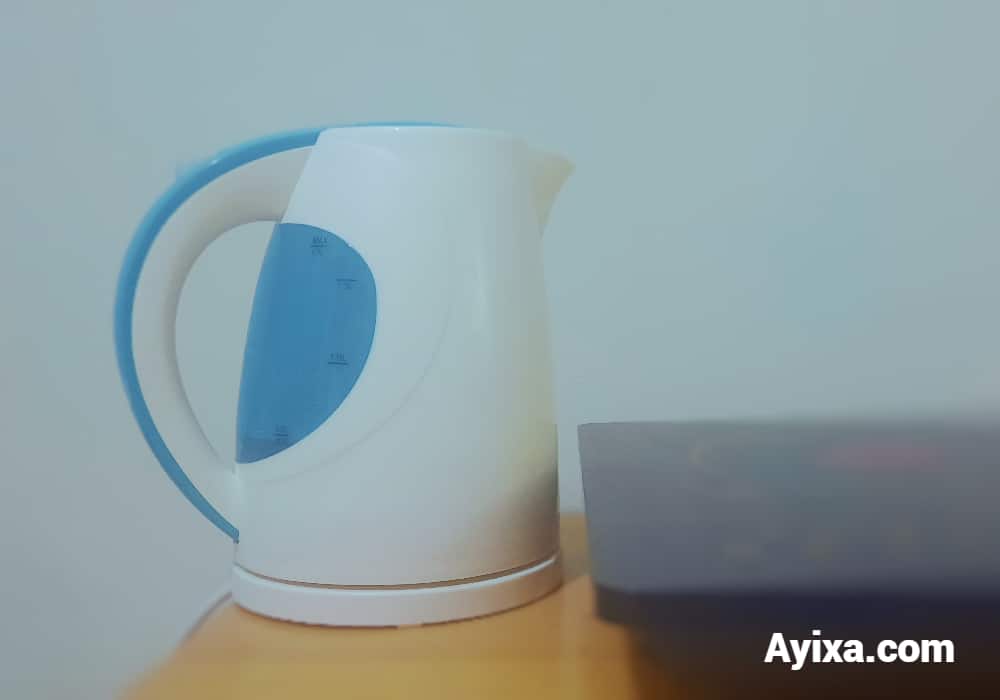If you’re out camping or in your RV you’ll need at some point that hot cup of coffee or tea to get you started. Can you use an off-grid battery inverter to run the kettle?
Is it even worthwhile running a kettle off an inverter? and, what size of inverter should you use?
Read on to find out if you can and should run an electric kettle off a power inverter, what size of inverter (Watts) and battery (Ah) you need, and the alternatives to using an inverter.
Can You Power a Kettle using an Inverter?
Short answer yes, you can power an electrical kettle off an inverter, provided that the inverter rating (watts) can meet the kettle’s power consumption (watts). You can use either a modified sine or a pure sine wave inverter.
What Size of Inverter (Watts) to Power an Electric Kettle?
If the rated power consumption of the kettle is 1,200 watts then you should use a 2,000-watt inverter or larger. Ultimately it depends on:
- the power consumption of the electric kettle and
- the other appliances you plan to run at the same time.
With a lower kettle wattage of 900 watts or less, you can use a 1,200 – 1,500 watt inverter or larger depending on what other appliances you plan to connect to the inverter when the kettle is running.
How Many Amps an Electric Kettle Draws
Assuming the rated power consumption of the kettle is about 1,200 watts, then when running, it draws about 100 amps from a 12V battery bank and therefore the inverter battery bank should be sized to handle this power draw.
Powering an Electric Kettle from AaCar – What Size of Inverter?
You could use a 1,000-watt inverter to power the smaller 650 – 900 watt rated kettles. You need to use separate cabling with fuse protection to handle the large current draw which exceeds the charging port/ cigarette socket power handling capacity of about 200 watts.
Additionally, keep the engine running to avoid draining the battery low or connect the inverter to a set of house batteries charged by the alternator.
What Size of Battery Size (Ah) to Use with the Inverter
There are several battery capacities that you can use to power the inverter depending on the kettle’s power draw, other connected appliances, and how long you plan to power the appliances.
A 400Ah AGM or 200Ah LiFePO4 battery bank will provide about an hour runtime with a 2,000-watt inverter assuming maximum power draw.
As noted above, this inverter size can run a 1,200-watt electric kettle.
What Size of Inverter to Battery DC Cables (AWG) to Use?
The inverter to battery DC cables should be suitably sized with a DC fuse installed to protect to handle the several hundred amps that they’ll be carrying with minimum voltage drop.
The table below provides a guide to what cable sizes you may use safely for the 1,500-2,000 watt inverter depending on the length of cable used.
| Inverter Capacity | Minimum cable size, 3 ft | Minimum cable size, 6 ft | Minimum cable size, 8 ft |
| 1,500 watts/ 12V | AWG 1/0 | AWG 2/0 | AWG 4/0 |
| 2,000 watts/12V | AWG 2/0 | AWG 2/0 | AWG 4/0 |
Should you Use an Inverter? Is it Worthwhile?
In my opinion, unless the battery-inverter setup is already available, then go ahead and use it. Otherwise, running an electric kettle off an inverter setup requires an investment in battery cables!
Alternatives to Using a Power Inverter for an Electric Kettle
As an alternative, consider using a gas cooktop. It’s cheaper and provides longer cooking times too!
Related Questions
Will a 1,500w Inverter Power a Kettle?
You can use the 1,500-watt inverter to power a 1,000-watt rated kettle provided you do not plan to connect any other large power-consuming appliances at the same time.
If you must use the kettle, then do run the other appliances before or after using the kettle and not at the same time.
Closing Thoughts
Yes, you can power an electric kettle using a power inverter. Make sure it is suitably sized to handle the inverter’s power draw and has a large enough battery bank too.
Alternatively, you can use a gas cooktop to boil water.
Related posts
